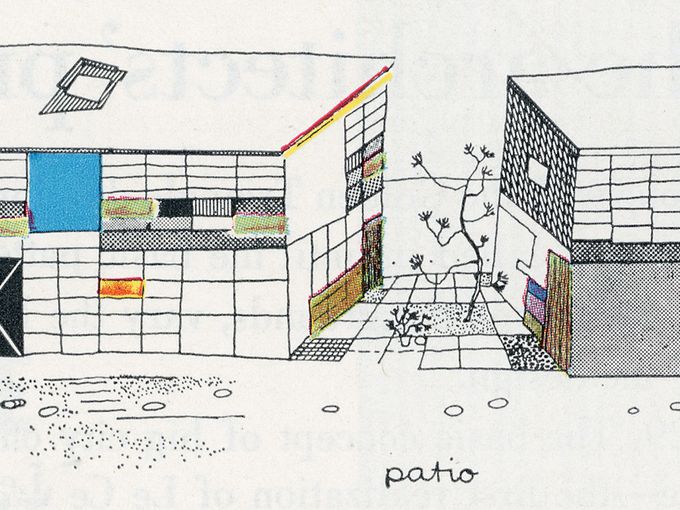Vitra Designweg
A conversation with Ronan Bouroullec

The route between the Vitra Campus and the centre of Weil am Rhein recently became a new attraction: the Vitra Designweg. Leading from the tram stop to the campus, the pedestrian path is marked by twelve columns showcasing a selection of Vitra Miniatures – scale models of classic furniture designs. The path itself was conceived by Ronan and Erwan Bouroullec, adding another collaborative work by the French designers to the public space around the Vitra Campus.
‘The layout of the road between the tram station and the Vitra Campus is a project that has been on the table for a few years,’ says Ronan Bouroullec. ‘From the beginning it was an interesting discussion. How can you make a rather boring pathway more lively? We tried to take the most natural approach possible.’
‘The layout of the road between the tram station and the Vitra Campus is a project that has been on the table for a few years,’ says Ronan Bouroullec. ‘From the beginning it was an interesting discussion. How can you make a rather boring pathway more lively? We tried to take the most natural approach possible.’
How was this project initiated?
As always, Rolf Fehlbaum challenged us in the discussions we had. We enjoyed the dialogue with him on this matter, especially because it was something different from designing a chair or a piece of furniture. This assignment focused on design in the public space. The task made us think on a much bigger scale, and this way of working requires a totally different approach. It ultimately took us two years to arrive at the final result.

Was the idea of the revolving glass cylinders the first one you had in mind?
We had different ideas about how to redesign the route between the tram stop and the Vitra Campus. During our research we first thought of doing something at ground level, like a pilgrimage walk with recurring elements to guide people along the way. Take the pilgrimage to Santiago de Compostela, for example, where scallops are used to mark the trail. But in the end, the idea of a tiny open-air museum took hold.So no seashells to guide people to the Vitra Campus. How did you end up with the idea of the glass containers?
We imagined a series of little rooms in which miniature exhibitions could be presented. Without thinking directly about the content and execution, we thought that tiny rooms could give a warmer feeling to this dull path. They would bring it alive in a subtle way. The idea behind this mini-museum was the same as for a normal one: Why not stage changing exhibitions every year to surprise the regular users of the road and to attract more passers-by? Miniatures from the Vitra collection are currently being shown, but why not alternatively display small sculptures, drawings or other objects? The lively effect comes not only from the changing concept of the mini-exhibition. The containers also revolve and are illuminated at night. The tiny rooms are fun to watch at any time of the day. It’s like a tableau vivant.

Wouldn’t you say that the first exhibition, a showcase of twelve classics from the famous Vitra Miniatures Collection, is a natural theme when talking about Vitra?
Even if we would like to have changing presentations, the installation along this route must be seen as an extension of the campus and the Vitra Design Museum. In this respect, it is the best choice to show some highlights from their impressive collection in these elegant containers. In the turning rooms, the little chairs look like graceful dancers. It is also important to mention the ecological aspects of the design. The electricity for the boxes comes from solar energy.This is not the first time you have designed something for the Vitra Campus.
That’s correct. We used to focus mainly on objects, but lately we have discovered that designing elements for the public space can be just as intriguing. The impact is so much bigger because of the scale. The public responsibility you have as a designer makes you think about every little detail. We had the opportunity to create Ruisseau a fountain in a marble base, filled with running water and we designed Ring, a large bench for the Oudolf Garten by Piet Oudolf on the Vitra Campus.
Publication date: 23.7.2021
Author: Dieter Van Den Storm
Images: © Vitra
Author: Dieter Van Den Storm
Images: © Vitra


